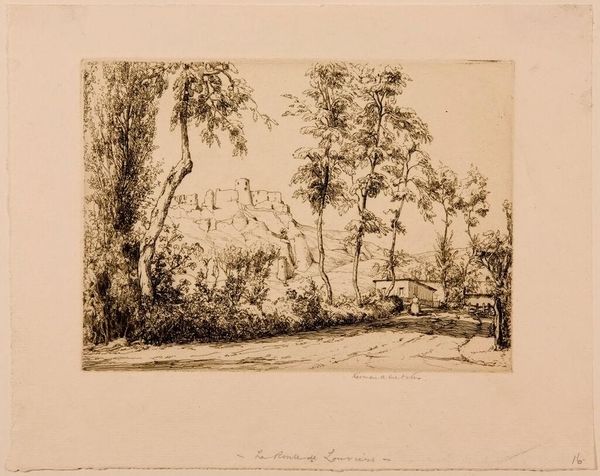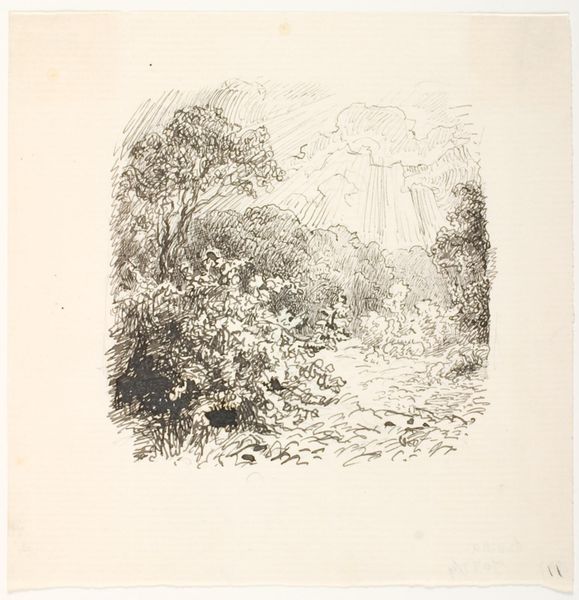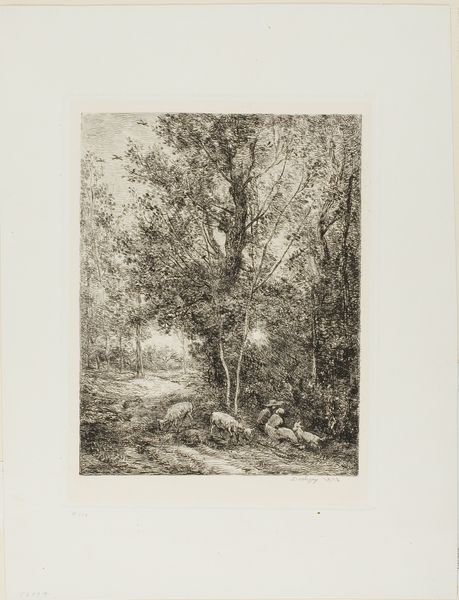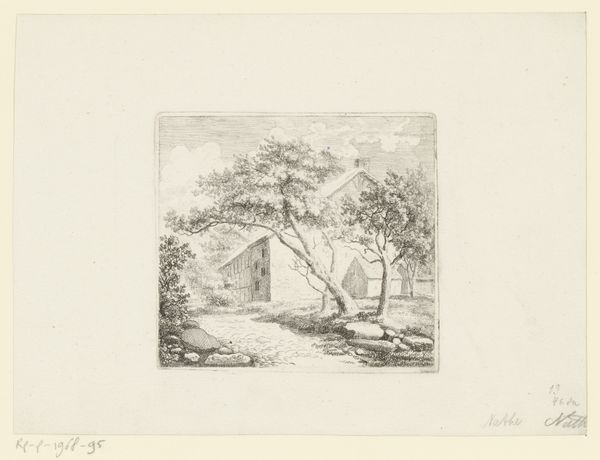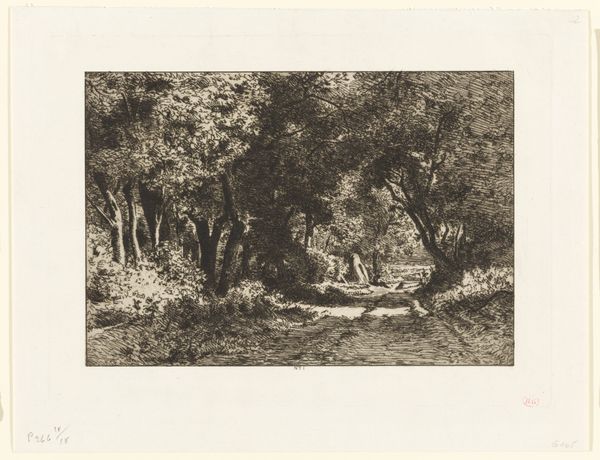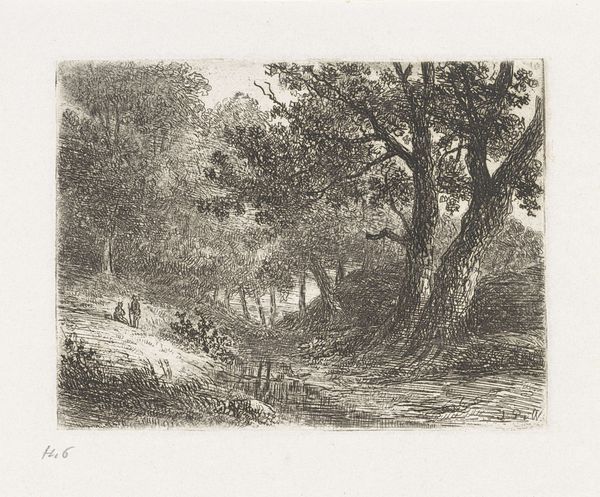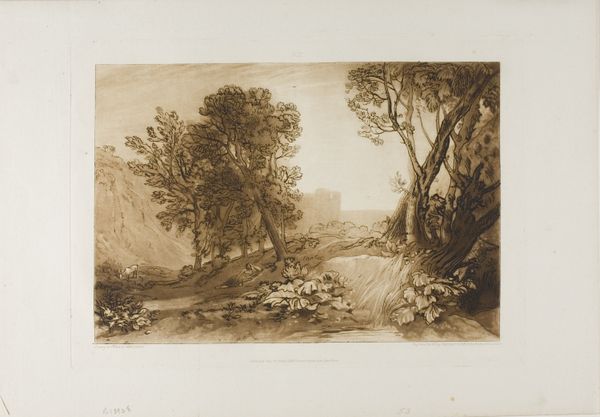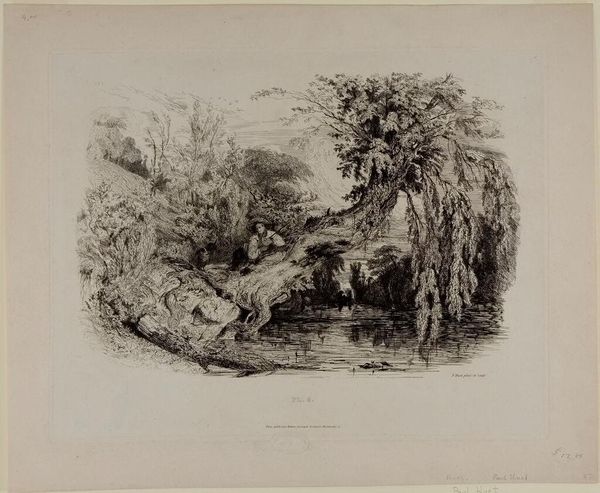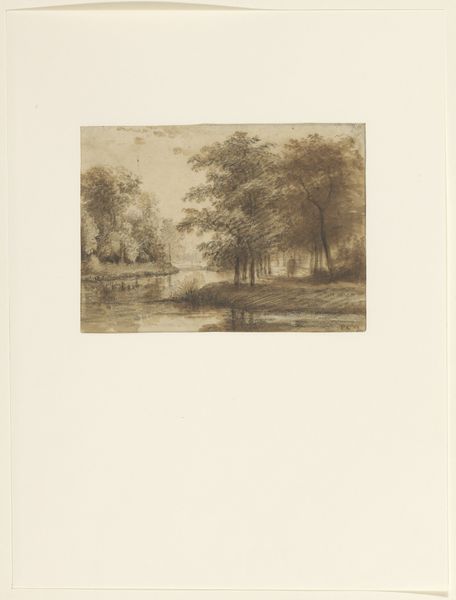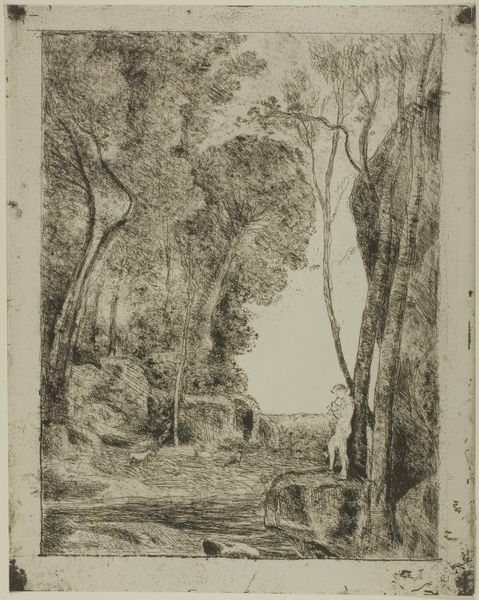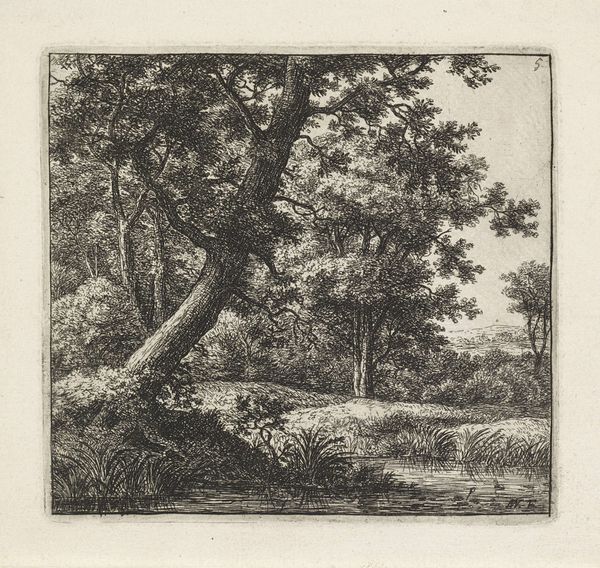
Dimensions: 193 × 242 mm (image); 200 × 250 mm (plate); 251 × 303 mm (sheet)
Copyright: Public Domain
Editor: So, this is Auguste-Louis Lepère’s “The Edges of Life” from 1909, an etching printed on paper. It gives off a melancholic, almost nostalgic mood. What strikes you when you look at this piece? Curator: It’s interesting that you say ‘melancholic’. Look closely. Do you notice how Lepère positions the figure—the fisherman—at the very edge of the water, literally at the 'edge of life?’ What might that placement suggest, considering water often symbolizes the unconscious? Editor: Are you suggesting he's positioned between awareness and the unknown? Curator: Precisely. And the cattle on the opposite bank? Cattle, historically, represented prosperity, the bounty of nature. By placing them distantly, almost obscured, what does that communicate about our relationship with such ideals in the modern age? Editor: Maybe that prosperity feels out of reach, something longed for but fading. Also, the fisherman, he looks so isolated... Curator: Consider the trees as well – they form almost cathedral-like arches. Humans throughout history have imbued forests with spirituality, refuge, a place for reflection. Lepère might be hinting at nature's capacity to offer solace, yet the fisherman remains solitary, doesn't he? Editor: Yes, he does. The symbolism makes the whole scene so much more profound. The relationship between nature and human consciousness becomes apparent. Curator: And the persistent power of these symbols across time. Even now, these images resonate. What a dialogue between man, nature and representation! Editor: It really is. I initially just saw a landscape, but it's really about the psychological space we inhabit.
Comments
No comments
Be the first to comment and join the conversation on the ultimate creative platform.
